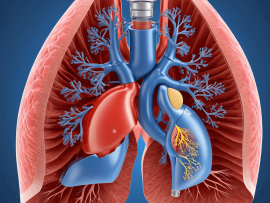Abstract To investigate the feasibility of regional oxygen saturation (rSO2) monitoring for preventing acute lung injury (ALI)/acute respiratory distress syndrome (ARDS) caused by cardiopulmonary bypass (CPB) in infants undergoing ventricular..
Read MoreAbstract Background: Transfusion-related acute lung injury (TRALI) and transfusion-associated circulatory overload (TACO) are leading causes of transfusion-related morbidity and mortality. Soluble factors in red blood cell (RBC) supernatant may increase..
Read MoreAbstract In recent decades, multiple efforts have been made to reduce population exposure to cigarettes, given that smoking is responsible for thousands of deaths annually. These actions have been effective,..
Read MoreAbstract Background Acute lung injury and acute respiratory failure are frequent complications of cardiogenic shock and are associated with increased morbidity and mortality. Even with increased use of temporary mechanical..
Read MoreAbstract IMPORTANCE: “Awake” cannulation for venovenous extracorporeal membrane oxygenation (ECMO), where patients remain spontaneously breathing without invasive mechanical ventilation during the cannulation procedure, may reduce lung injury from positive pressure..
Read MoreAbstract Veno-venous extracorporeal membrane oxygenation is indicated in patients with acute respiratory distress syndrome and severely impaired gas exchange despite evidence-based lung protective ventilation, prone positioning and other parts of..
Read MoreAbstract OBJECTIVES: Cardiopulmonary bypass triggers systemic inflammation, resulting in lung injury, and frequently leads to prolonged mechanical ventilation. Biomarkers of systemic inflammation are required to predict the risk of such..
Read MoreAbstract Background Post–cardiac surgery pulmonary dysfunction may be underreported. Therefore, we evaluated associated risk factors for prolonged pulmonary support after cardiac surgery. Methods and materials We conducted a retrospective, observational..
Read More









